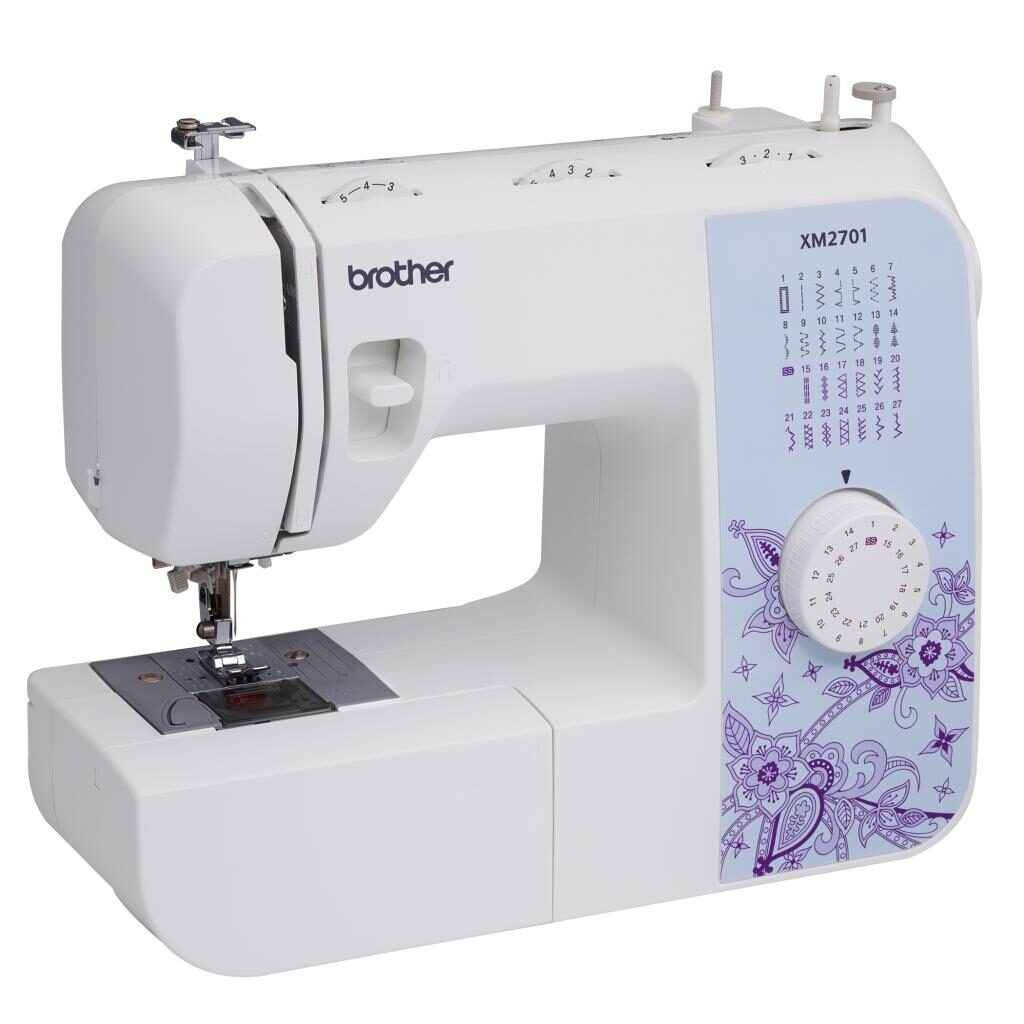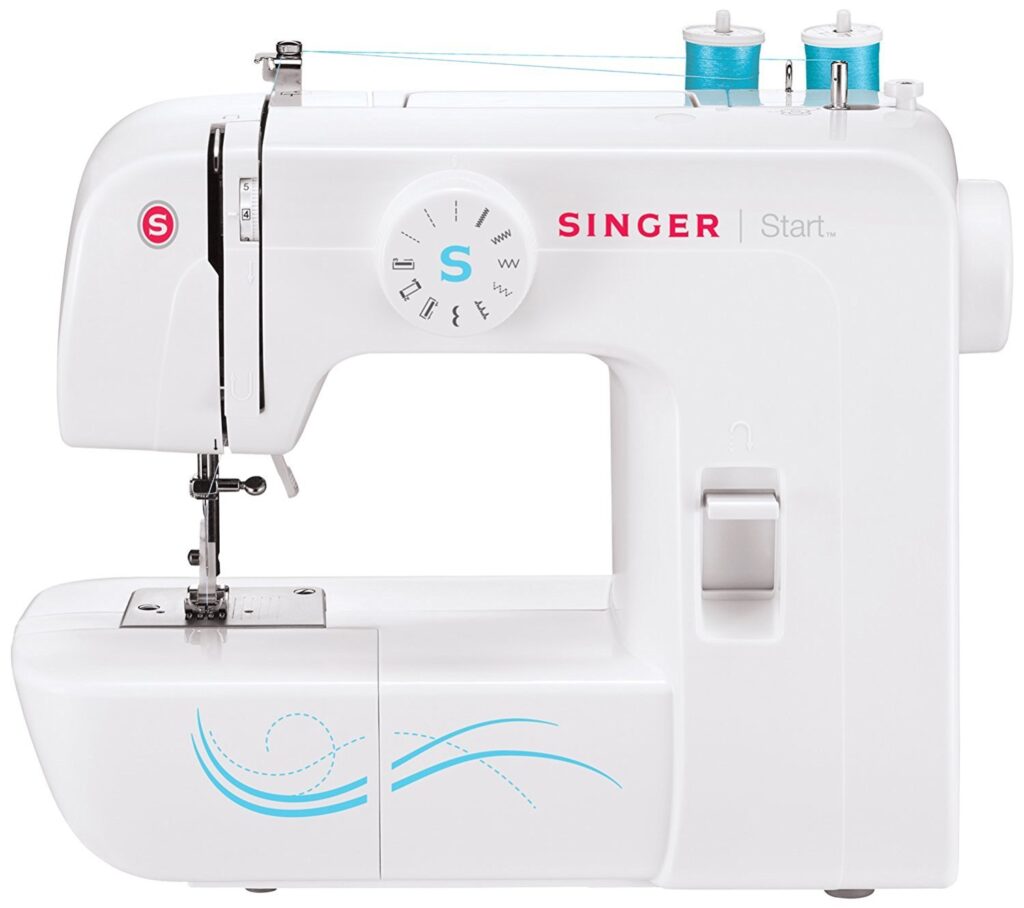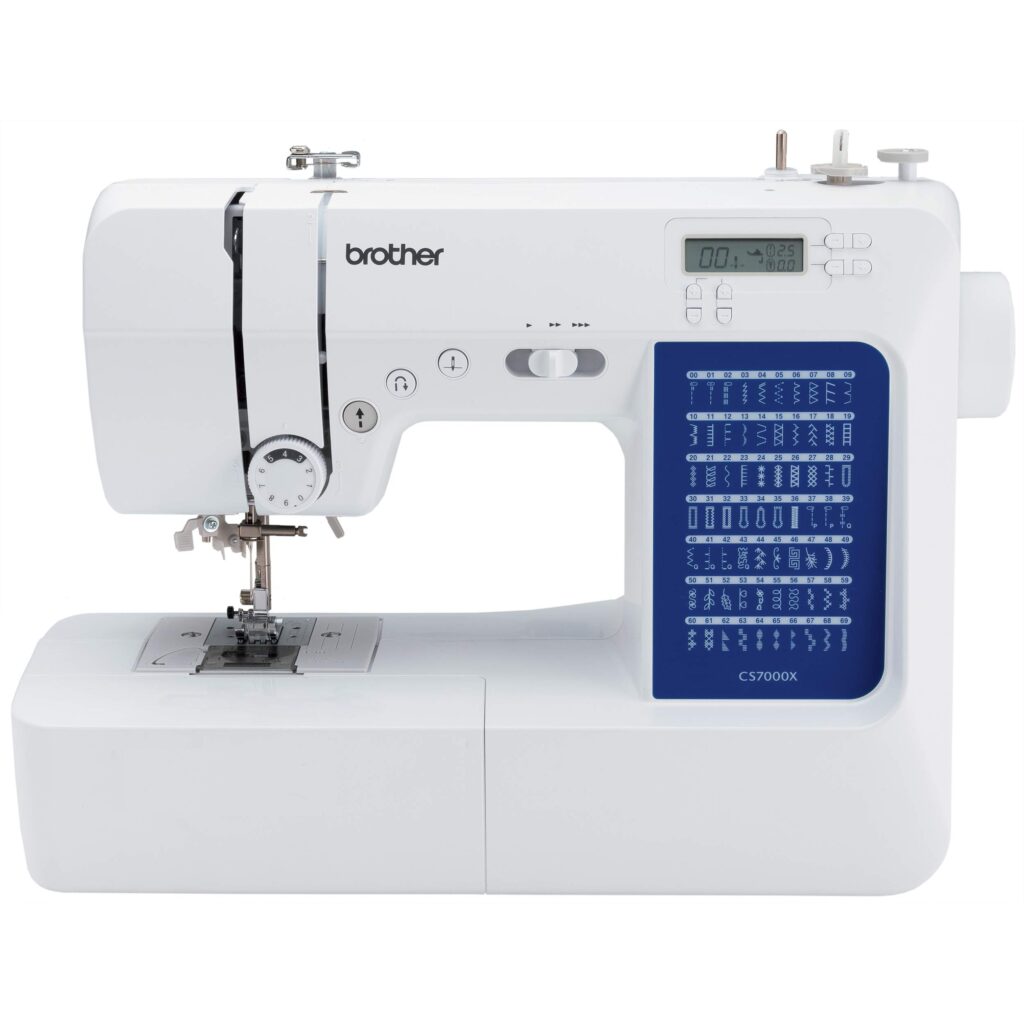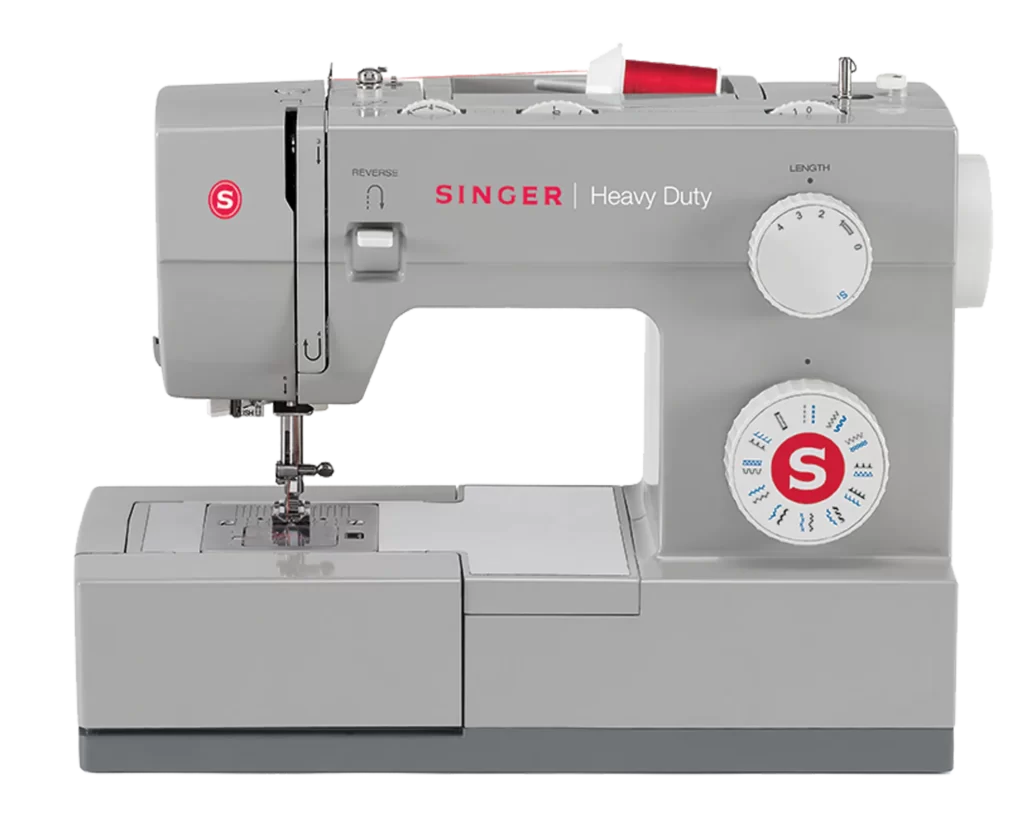If you want to learn how to sew this year, researching the best sewing machines for beginners is a great starting point. Luckily for you, I have cut out the need for hours of research and selected only the most reliable sewing machines for beginners that I recommend as a passionate, qualified seamstress.
I began sewing at a young age, 12. My parents gifted me a Brother GS1250 sewing machine, which I used for about ten years. It was an absolute workhorse. I made many things with it, including clothing to sell at the local craft markets.
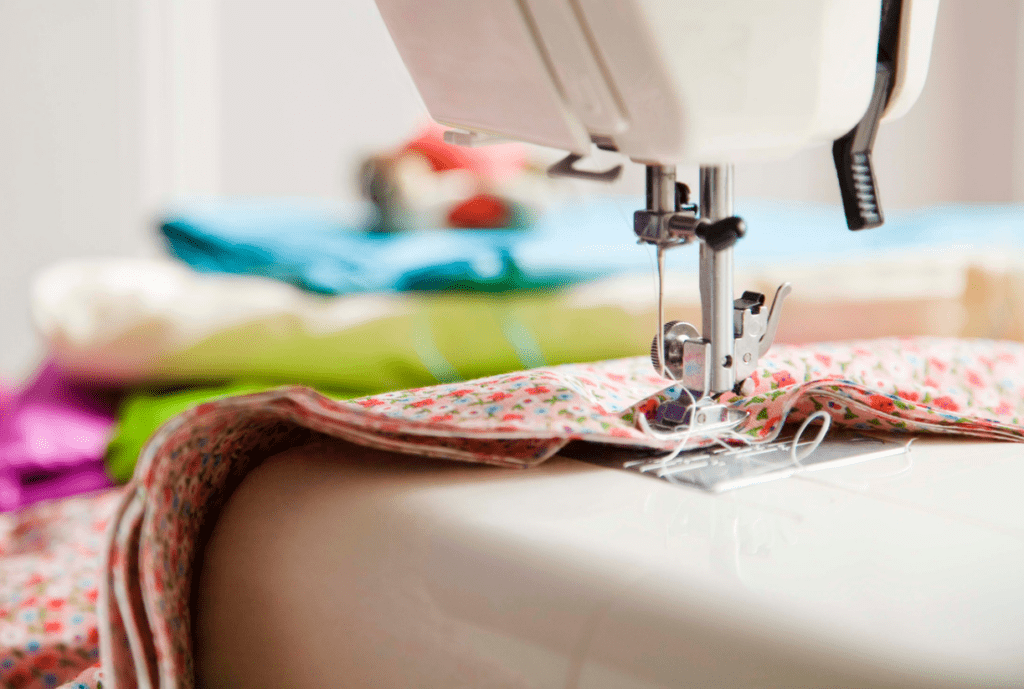
Despite its low price tag, this sewing machine produced high-quality results, demonstrating how effective a budget-friendly option can be. Some models cost less than $100, while others cost several hundred dollars. More expensive sewing machines often have more stitches or feet options to play with. Depending on what you want to sew, this may not be necessary when starting.
If you find the lower-priced domestic sewing machines too expensive, try shopping second-hand, like on eBay, for bargains. I have used a few second-hand sewing machines over the years and enjoyed them just as much as my new ones. You may be pleasantly surprised at the quality of the machines you find, and the cost savings can be significant.
Before we jump into it, it’s helpful to know what to consider before purchasing a sewing machine.
This Post May Contain Affiliate Links. Please Read Our Disclose Policy.
What to Consider before Purchasing a Sewing Machine
I know how exciting it can be to start a new hobby and quickly buy all the bells and whistles, but it’s important to consider a few vital factors before purchasing your first sewing machine.
Purpose – What type of projects will you be working on? Depending on what you are making or what fabric you use, some machines are better suited than others. For example, if you work with heavy-duty materials such as denim, you will need a machine that can handle the extra weight and thickness. If you want a machine with specific features, such as an adjustable stitch length or a built-in bobbin winder, check this on any machines you’re interested in.
Features – Consider the types of stitches and features that are important to you, such as automatic buttonholes or embroidery capabilities. Some sewing machines have automatic thread cutters, like my Bernina B38 sewing machine. Now I could never change back to a machine without this feature.
Ease of use – Consider the machine’s weight, size, and ease of use. Can you easily move it if you have limited space? Do you need a lightweight sewing machine to take to classes or a friend’s house?
Warranty – Is it important to you to look for a machine that comes with a warranty or guarantee?
Additional things – What are the machine’s compatibilities with other tools? Is it easy to maintain, and are parts widely available for repair? This is important to consider if you are purchasing an older secondhand sewing machine.
If you need help setting up your sewing kit, here are some useful articles:
- Sewing Tools and Equipment List with Names and Pictures
- Sewing Marking Tools with Names & Pictures
- Sewing Cutting Tools for Beginners
Sewing Machine Features to Consider
Certain features may be worth paying extra for when considering a new sewing machine, depending on your preferences. Here are a few examples:
Automatic needle threader – When it comes to threading needles, an automatic needle threader can save time and hassle, especially if you have vision problems. This little device pulls down from the top of the needle area and guides the thread through the eye of the machine needle.
Drop-in bobbin – Drop-in bobbins are inserted into sewing machines by dropping them into the bobbin compartments. They are super easy to use and maintain, allowing quick and easy bobbin changes without rethreading the machine. This helps prevent the bobbin from getting tangled.
Automatic buttonhole – This feature allows you to create professional-looking buttonholes easily.
Adjustable presser foot pressure – With this feature, you can adjust the presser foot pressure, which is particularly useful when working with different types of fabrics. For example, lighter materials like chiffon or silk require less pressure than thick cotton.
Speed control – One of my favourite features. Speed control allows you to control the speed of the machine, which can be helpful when still learning the basics of sewing. I love this setting to slow down my stitching when topstitching a garment.
Automatic thread cutter – Another one of my favourite features is an automatic thread cutter. The sewing machine automatically cuts the thread when you finish a seam, saving you time on cutting threads.
Extension table – This feature can be helpful if you plan to work on larger projects like duvets, blankets, or oversized coats.
What Is the Difference Between a Domestic and Industrial Sewing Machine
You may have heard the terms domestic and industrial sewing machines. These names are identifiers between a home sewing machine and an industrial one.
Domestic sewing machines are designed for home use and are generally smaller, lighter, and less expensive than industrial machines. They typically have a single needle and are suitable for lighter fabrics and smaller projects, such as clothing, home décor, and crafts.
Industrial sewing machines are designed for commercial or industrial use. They are built to handle heavy-duty fabrics and larger projects, such as upholstery, canvas, and leather goods. They are generally larger, heavier, and more expensive than domestic machines.
The Best Sewing Machines for Beginners
Below you will find a list of the best beginner sewing machines that are affordable, durable, and will last you for many years if cared for properly.
As a passionate sewer, I always love trying sewing crafts, from quilting when I made a quilted jacket to sewing simple homewares like these ruffled cushions. If you can, try purchasing a sewing machine that will allow you to grow your skills rather than needing to upgrade later.
Several sewing machines are well-suited for beginners. Here are my favourite options based on personal experiences and reviews:
Brother XM2701
The Brother XM2701 is a reliable beginner-friendly sewing machine that offers an array of features, making it suitable for a wide range of sewing projects. It has 27 built-in stitches, including various straight, zigzag, and decorative stitches. It also features a one-step buttonhole, making adding buttonholes to your projects a breeze and a free arm capability that allows you to sew cuffs and pant legs easily.
My favourite feature is the built-in needle threader, making threading the machine quick and easy, and an adjustable presser foot pressure control, which is ideal for working with different fabrics. The machine is lightweight and easy to use, making it a practical option for taking to classes or friends’ houses. Despite its lightweight design, the machine is built with a heavy-duty metal frame, ensuring stability and durability.
Note: This sewing machine is like the Brother GS2150, which is no longer available in the United States.
Price at time of publishing: $151
| Pro’s | Con’s |
|---|---|
| Affordable and good value for money. | The machine can be a bit noisy when sewing. |
| Lightweight and easy to use. | No automatic thread cutter. |
| A variety of features on this machine including 27 built-in stitches. | It’s not that suitable for heavy fabrics. |
| Comes with 6 sewing feet, a 3-piece needle set, twin needle, and 4 bobbins. | |
| Free lifetime technical support via online, live chat or phone. |
Janome 2212
The Janome 2212 is the perfect sewing machine for those just starting to sew or those who want a reliable, easy-to-use machine for various projects. With 12 built-in stitches, a built-in needle threader, a 4-step buttonhole, and an adjustable presser foot pressure control, this sewing machine has everything you need to start your next sewing project.
Plus, its heavy-duty metal frame ensures that it’s built to last. And at a lightweight, it’s easy to carry around to classes or a friend’s house for a sewing party! With a top-loading bobbin, you’ll spend less time changing bobbins and more time creating beautiful projects.
Price at time of publishing: $199
| Pro’s | Con’s |
|---|---|
| Well-built and durable. | It is a bit heavier than other machines. |
| Comes with 3 sewing feet, 3 bobbins, and a set of needles. | More expensive than some of the other beginner-friendly options. |
| 12 built-in stitches and an easy-to-use 4-step buttonhole. | |
| Extra high presser foot lift. | |
| Has a built-in needle threader. |
Singer Start 1304
For kids who want to learn to sew, the Singer Start 1304 is a great machine! Its easy-to-use design and simple controls make it the perfect first machine. It comes with 6 built-in stitches, including a straight stitch and a zigzag stitch, which will give your child the chance to experiment and explore different stitching techniques. It’s lightweight and easy to carry, which is handy for taking classes during school holidays.
The Singer Start 1304 is also suitable for adults looking for a reliable, easy-to-use machine. It’s suitable for small projects like making pillows and bags, or mending clothes.
Price at time of publishing: $189
| Pro’s | Con’s |
|---|---|
| Simple design with easy-to-use features. Perfect for kids who want to sew. | Less durable than other options. |
| Comes with 3 sewing feet, 3 bobbins, and a set of needles. | A limited number of stitches compared to some other beginner-friendly machines. |
| 6 built-in stitches and an easy-to-use 4-step buttonhole. | |
| Lightweight and portable. | |
| 25-year warranty in the USA & Canada. |
Brother CS7000X
The Brother CS7000X is not only a versatile machine for everyday sewing projects, but it is also a great option for quilting. It has many built-in stitches, including various straight, zigzag, and decorative stitches, that can create beautiful designs on your quilts. The machine also features a free arm capability, allowing you to sew cuffs and pant legs easily. It also has an adjustable presser foot pressure control, ideal for working with different types of fabrics, including the multiple layers of fabric commonly used in quilting.
It comes with a walking foot and a presser foot specifically designed for quilting. This attachment allows the machine to feed the upper and lower layers of fabric through the machine simultaneously, ensuring that the layers are sewn together evenly and prevent shifting. This makes it suitable for quilting projects like making quilts, wall hangings, and more.
With this machine, you can explore other aspects of sewing, like quilting, and grow as a sewer.
Price at time of publishing: $219
| Pro’s | Con’s |
|---|---|
| Features 70 stitch options, a built-in needle threader, an LCD screen display and a drop-in bobbin. | Higher upfront cost than other machines. |
| Includes a wide table, 10 sewing feet, a quilt guide, and a protective hard case. | Requires a bit more storage space due to the bigger accessories. |
| Programmable needle up/down button, variable speed options and an automatic presser foot pressure control. | It could be overwhelming to begin with. |
| Lightweight and portable. | |
| Incredible value for money! | |
| Explore sewing with the functions of this machine, including quilting abilities. |
Singer Heavy Duty 4423
Singer’s 4423 sewing machine is built to handle heavy-duty sewing! With its powerful motor, you can easily sew through multiple layers of thick fabrics like denim and canvas, making it the perfect machine for all your heavy-duty projects.
It comes with 23 built-in stitches, including a variety of straight, zigzag, and decorative stitches, so you can get creative with your projects, even when working with heavy fabrics. And if that wasn’t enough, it also has a built-in one-step buttonhole, which makes adding buttonholes to your projects a breeze, no matter how thick the fabric is.
Price at time of publishing: $199
| Pro’s | Con’s |
|---|---|
| Great for beginners who want a machine that can handle heavy fabrics. | It is a bit heavier than other sewing machines. |
| It has 23 built-in stitches, automatic needle threader, 4 sewing feet and a top drop-in bobbin. | Only comes in a grey colour frame. |
| Heavy-duty metal frame for added durability. | |
| Can sew through multiple layers of fabric unlike most standard domestic sewing machines. |
Maintaining Your Sewing Machine
Sewing machines require regular maintenance to keep them running smoothly and to prolong their lifespan. At university, I cleaned my machine once a week to reduce the risk of breakdowns. Here are a few tips for maintaining your sewing machine:
- Cleaning – Regularly dust and clean your machine, including the bobbin case and feed dogs. Use a small brush and a lint roller to remove fabric fluff, broken needles and dust.
- Oil – Oiling your machine is essential for keeping it running smoothly. Not all sewing machines require oiling, so it’s best to refer to your machine’s manual for instructions on how and where to oil it.
- Timing – Regularly check your machine’s timing to ensure that the needle and hook are in proper alignment.
- Tension – Adjust the tension as needed to ensure that your machine produces the correct tension.
- Storing – When not in use, pop the cover on and store the machine in a dry, dust-free place. My sewing machine has a hard case cover, so it’s safe to store in the bottom of my wardrobe without damage.
- Regular Service – It’s a good idea to get your machine serviced by a professional every year to keep your sewing machine in top-notch condition.
For specific maintenance instructions and recommendations, refer to your machine’s manual. A well-maintained machine will last longer, produce better results and cost less in the long run.
To Sum Up
There are many things to think about when purchasing your first sewing machine, such as its purpose and features and how easy it will be to repair. It’s essential to consider your needs and preferences to make the best-informed decision about what sewing machine to purchase for your sewing journey. I hope this guide to the best beginner sewing machines has been insightful and helped you decide which machine is best for you.
